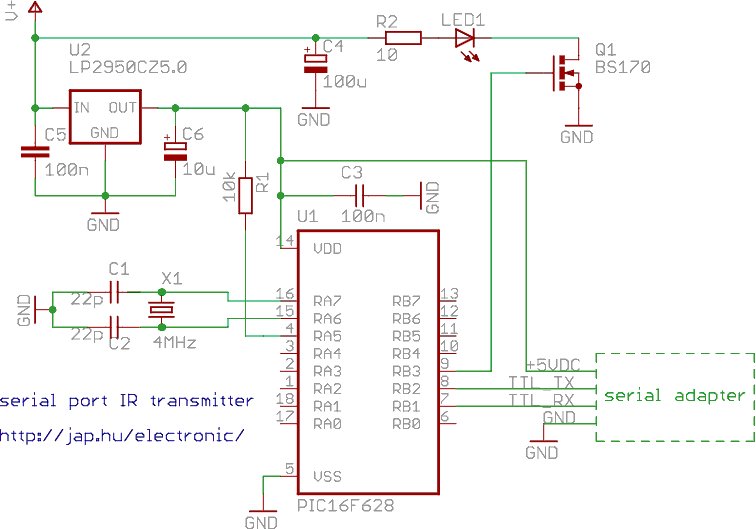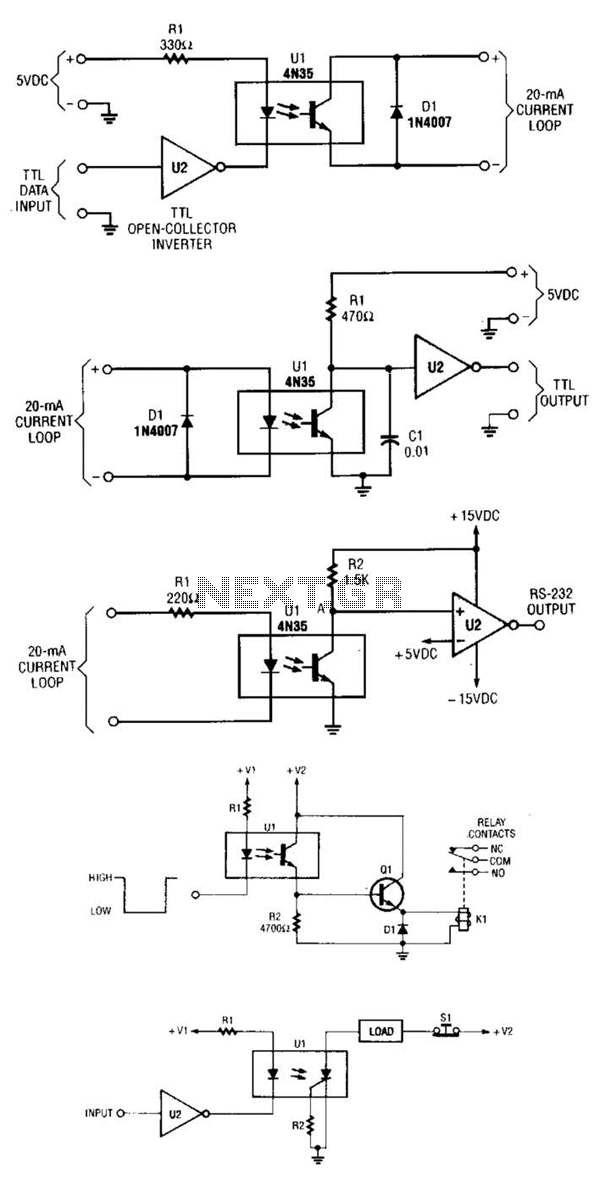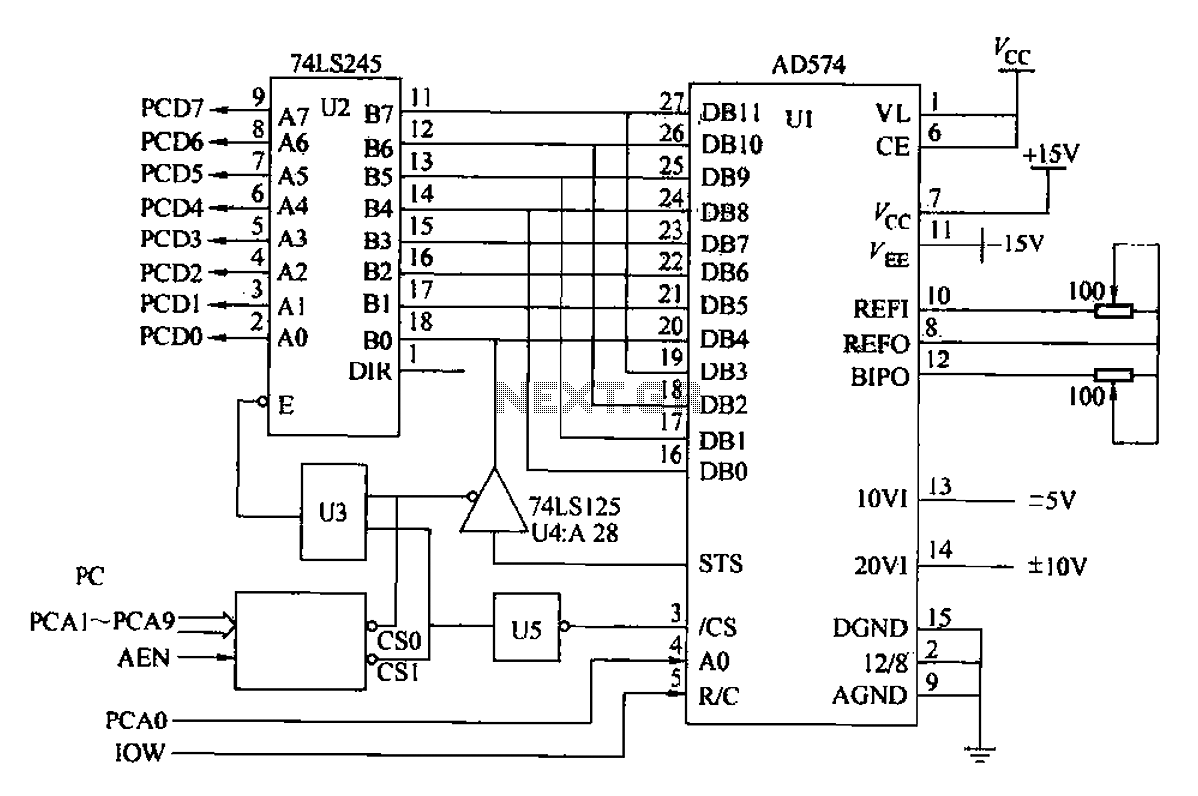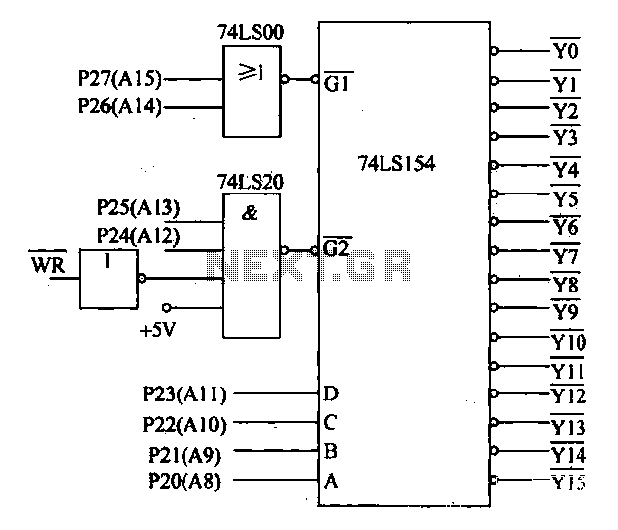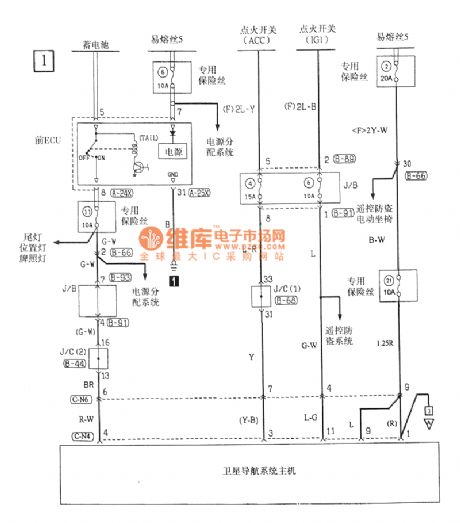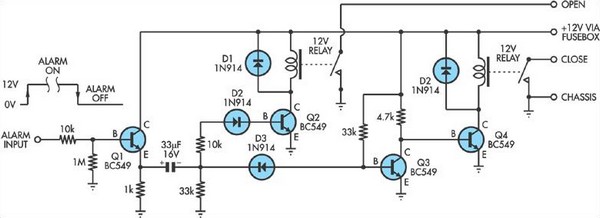
Serial mouse interface for Commodore
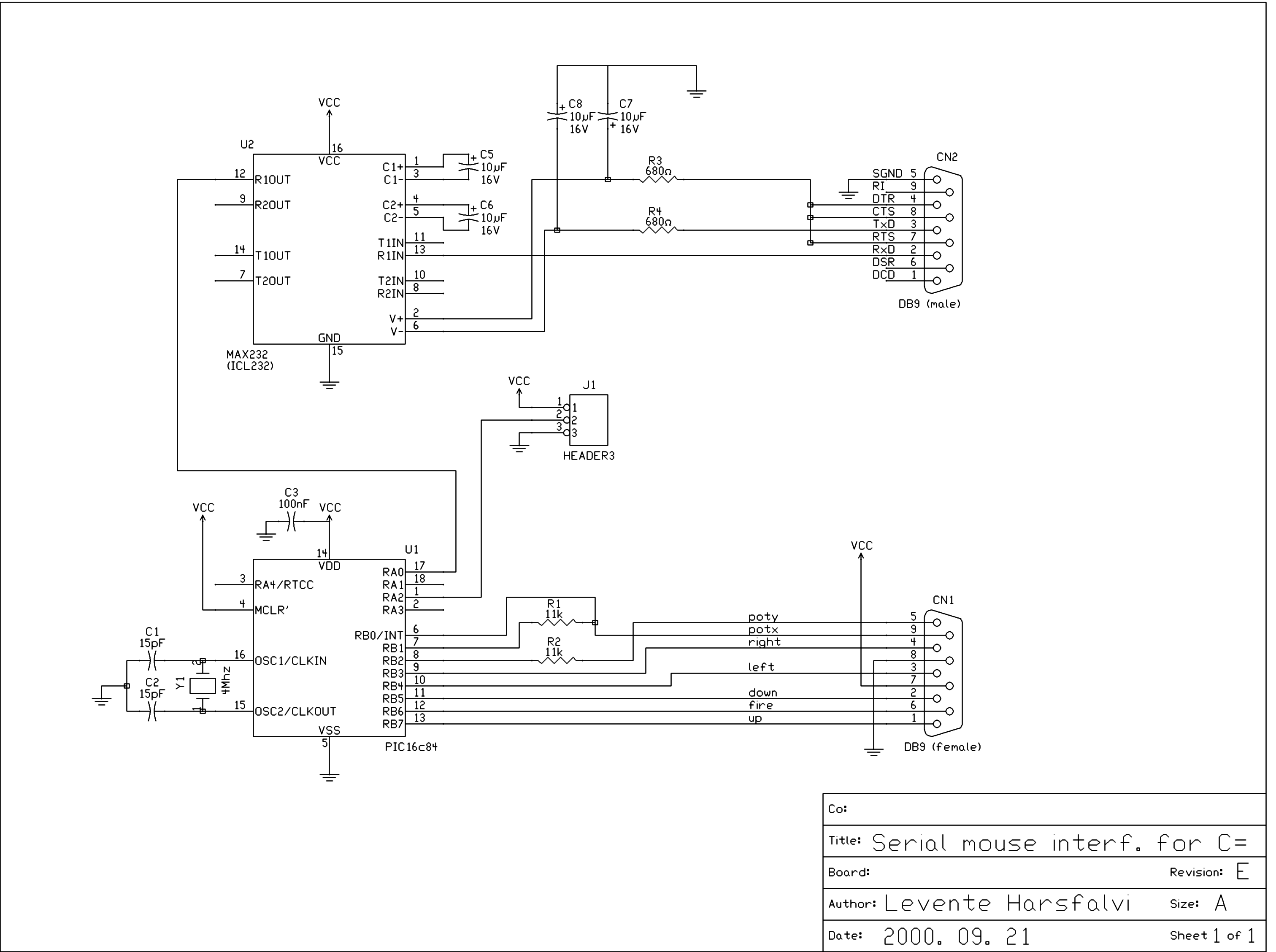
This interface design has a long history. It is the first microcontroller design initiated in early 1998, which has evolved over the years. Initially, the schematic diagram for the first prototype was drafted in 1998, and it later became the subject of a diploma thesis. Due to various design flaws, the project was set aside for some time, but it was revisited occasionally for revisions and the addition of new software features. The intention was to share the design freely and encourage improvements from others, fostering interest in the project. Many individuals contributed to the development, including those who provided Commodore materials from the Funet CBM archive. Notable contributors included Frank Kontros, who supplied user manuals and patents, Endre Turgóczy, who assisted with board manufacturing, and LG szlG³ Oravecz, who provided mouse data. Additional acknowledgments were made to various sources for information on PC mice and programming tools. The design and software are published under the General Public License by the Free Software Foundation, emphasizing their utility without any warranty. Historically, Commodore did not initially plan for mouse support in their 8-bit line of computers, and the introduction of the C64 in 1982 did not include mouse functionality. Mouse support was considered later with the advent of graphical user interfaces, leading to the production of the 1350 and 1351 mice. However, poor marketing strategies hindered their popularity. The joystick remained the most commonly used input device, with limited applications supporting mouse input. Currently, Commodore mice are difficult to find in Hungary, although they may still be available in the US. In contrast, affordable and aesthetically pleasing mice for PC compatibles are widely available globally, prompting the idea of adapting such mice for use with the C64.
The interface design described is a microcontroller-based project aimed at providing mouse functionality for the Commodore 64 (C64), a popular home computer from the 1980s. The project began as an academic endeavor and has been developed over several years, incorporating feedback and contributions from various individuals in the Commodore community. The circuit design likely includes essential components such as a microcontroller unit (MCU), interfacing circuitry for the mouse, and connections to the C64's input ports.
The microcontroller serves as the core processing unit, handling the input signals from the mouse and converting them into a format compatible with the C64's joystick interface. The schematic would include power supply connections, typically derived from the C64's existing power rails, ensuring that the design operates within the acceptable voltage levels.
The interfacing circuitry may consist of analog-to-digital converters (ADCs) to interpret the mouse movements and button presses accurately. The design could also incorporate resistors, capacitors, and possibly operational amplifiers to filter and condition the signals from the mouse before sending them to the microcontroller.
The output from the microcontroller would be formatted to mimic the signals generated by a joystick, allowing existing software on the C64 to recognize and utilize mouse input seamlessly. This adaptation would enable a broader range of applications to support mouse functionality, enhancing user experience, especially in graphic design and gaming scenarios where precision input is critical.
Overall, the project reflects a commitment to preserving and enhancing the functionality of classic computing systems, while also promoting collaboration and knowledge sharing within the retro computing community. The design's publication under the General Public License encourages further development and adaptation by enthusiasts, ensuring its relevance for future generations of users.This interface design comes a long way. This is in fact the first microcontroller design I`ve ever started. Somehow it kept going with me during past few years. I probably drew the first lines of the schematics diagram of the first prototype in early 1998. Later, in the middle of 1998 it became the subject of my diploma-thesis for my graduation. H owever, because of some flaws of the design I rather put it away to the desk and spent time on it just occassionally - these times I usually revised the board (as I quickly sum, four or five times) and added new features to the software. I think it still could go on like this for a while, since there could still be some features to add but I think I better sum my results and share with you (after all, I planned this design to be free just from the start), and let`s see if anybody can improve it (or at least if there is some interest at all).
A lot of people helped me during the development (some of them not knowing they actually did :-) ). First of all, most Commodore material was obtained from the Funet CBM archive. A warm personal thank goes to the following people (in no particular order): Frank Kontros ( 1351 user`s manual, 1351 patents and testing a real 1351 mouse, providing me with lots of interesting data); Endre TurG³czi (help in manufacturing the boards); LG szlG³ Oravecz (1351 mouse data). Thanks go to others whose products I used: Tomi Engdahl ( lots of PC mouse information ), Jens DyekjGr Madsen (simple PIC programmer), Silicon Software Studio (PIP02, PIC programmer software), Microchip Technology Inc.
(MPASM, not mentioning the wonderful PIC series ;-) ), Holophase Inc. (Circad). The document was edited in Netscape Composer, pictures were customized in Adobe Photoshop 4. 01 (Win95). This design and the software are © 1998, 2000 Levente HG rsfalvi. Everything you find here is published under the General Public License by the Free Software Foundation. This is distributed in the hope that it will be useful, but WITHOUT ANY WARRANTY; without even the implied warranty of MERCHANTABILITY or FITNESS FOR A PARTICULAR PURPOSE.
See the GNU General Public License for more details. People involved in the C= world know that Commodore haven`t planned mouse support for their 8-bit line when the machines first appeared in the market. When the C64 was introduced in 1982, Commodore still haven`t cared about the mouse; they supported the rather obsolete paddles, besides the standard digital (Atari VCS type) joysticks.
The mouse support came into consideration later, when GUI`s, like GEOS were planned and introduced. They also produced their first mouse, the 1350, and soon its successor, the proportional 1351. . But as it always went on with Commodore, their bad marketing politics didn`t really help in making these mice popular. Speaking of the C64, as I see, the most popular positioning device has always been the joystick, and not much applications, except GEOS of course, support mouse natively.
From the other hand, a mouse would be handy in a lot of situations. Lots of programs would suggest mouse besides, or rather in favour of the joystick. (Try drawing something in Art Studio using a joystick and a mouse; you`ll know what I mean. The feeling you get is slightly different. ) Speaking of the present, Commodore mice are at least here (Hungary, Europe) unable to purchase. Unfortunately, neither I have an original 1351 mouse (though I`ve been trying hard to obtain one) :-(. As far as I know, they`re still available in the US. But that`s not a real difference anyway; from my point of view, they`re hard to purchase, and they`re expensive.
You may or may not agree with me - would suppose depending on your local possibilities. But one can purchase a perfect, good-looking and cheap mouse for PC compatibles simply anywhere over the World. Why not trying to convince these mice to work with the C64, if possible. This last `if` is, BTW, 🔗 External reference
The interface design described is a microcontroller-based project aimed at providing mouse functionality for the Commodore 64 (C64), a popular home computer from the 1980s. The project began as an academic endeavor and has been developed over several years, incorporating feedback and contributions from various individuals in the Commodore community. The circuit design likely includes essential components such as a microcontroller unit (MCU), interfacing circuitry for the mouse, and connections to the C64's input ports.
The microcontroller serves as the core processing unit, handling the input signals from the mouse and converting them into a format compatible with the C64's joystick interface. The schematic would include power supply connections, typically derived from the C64's existing power rails, ensuring that the design operates within the acceptable voltage levels.
The interfacing circuitry may consist of analog-to-digital converters (ADCs) to interpret the mouse movements and button presses accurately. The design could also incorporate resistors, capacitors, and possibly operational amplifiers to filter and condition the signals from the mouse before sending them to the microcontroller.
The output from the microcontroller would be formatted to mimic the signals generated by a joystick, allowing existing software on the C64 to recognize and utilize mouse input seamlessly. This adaptation would enable a broader range of applications to support mouse functionality, enhancing user experience, especially in graphic design and gaming scenarios where precision input is critical.
Overall, the project reflects a commitment to preserving and enhancing the functionality of classic computing systems, while also promoting collaboration and knowledge sharing within the retro computing community. The design's publication under the General Public License encourages further development and adaptation by enthusiasts, ensuring its relevance for future generations of users.This interface design comes a long way. This is in fact the first microcontroller design I`ve ever started. Somehow it kept going with me during past few years. I probably drew the first lines of the schematics diagram of the first prototype in early 1998. Later, in the middle of 1998 it became the subject of my diploma-thesis for my graduation. H owever, because of some flaws of the design I rather put it away to the desk and spent time on it just occassionally - these times I usually revised the board (as I quickly sum, four or five times) and added new features to the software. I think it still could go on like this for a while, since there could still be some features to add but I think I better sum my results and share with you (after all, I planned this design to be free just from the start), and let`s see if anybody can improve it (or at least if there is some interest at all).
A lot of people helped me during the development (some of them not knowing they actually did :-) ). First of all, most Commodore material was obtained from the Funet CBM archive. A warm personal thank goes to the following people (in no particular order): Frank Kontros ( 1351 user`s manual, 1351 patents and testing a real 1351 mouse, providing me with lots of interesting data); Endre TurG³czi (help in manufacturing the boards); LG szlG³ Oravecz (1351 mouse data). Thanks go to others whose products I used: Tomi Engdahl ( lots of PC mouse information ), Jens DyekjGr Madsen (simple PIC programmer), Silicon Software Studio (PIP02, PIC programmer software), Microchip Technology Inc.
(MPASM, not mentioning the wonderful PIC series ;-) ), Holophase Inc. (Circad). The document was edited in Netscape Composer, pictures were customized in Adobe Photoshop 4. 01 (Win95). This design and the software are © 1998, 2000 Levente HG rsfalvi. Everything you find here is published under the General Public License by the Free Software Foundation. This is distributed in the hope that it will be useful, but WITHOUT ANY WARRANTY; without even the implied warranty of MERCHANTABILITY or FITNESS FOR A PARTICULAR PURPOSE.
See the GNU General Public License for more details. People involved in the C= world know that Commodore haven`t planned mouse support for their 8-bit line when the machines first appeared in the market. When the C64 was introduced in 1982, Commodore still haven`t cared about the mouse; they supported the rather obsolete paddles, besides the standard digital (Atari VCS type) joysticks.
The mouse support came into consideration later, when GUI`s, like GEOS were planned and introduced. They also produced their first mouse, the 1350, and soon its successor, the proportional 1351. . But as it always went on with Commodore, their bad marketing politics didn`t really help in making these mice popular. Speaking of the C64, as I see, the most popular positioning device has always been the joystick, and not much applications, except GEOS of course, support mouse natively.
From the other hand, a mouse would be handy in a lot of situations. Lots of programs would suggest mouse besides, or rather in favour of the joystick. (Try drawing something in Art Studio using a joystick and a mouse; you`ll know what I mean. The feeling you get is slightly different. ) Speaking of the present, Commodore mice are at least here (Hungary, Europe) unable to purchase. Unfortunately, neither I have an original 1351 mouse (though I`ve been trying hard to obtain one) :-(. As far as I know, they`re still available in the US. But that`s not a real difference anyway; from my point of view, they`re hard to purchase, and they`re expensive.
You may or may not agree with me - would suppose depending on your local possibilities. But one can purchase a perfect, good-looking and cheap mouse for PC compatibles simply anywhere over the World. Why not trying to convince these mice to work with the C64, if possible. This last `if` is, BTW, 🔗 External reference
